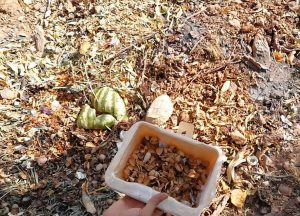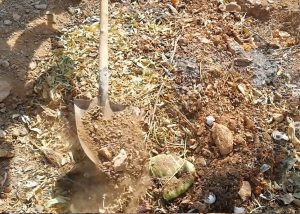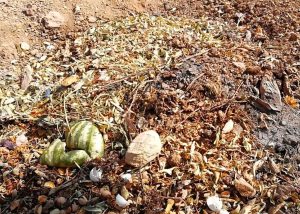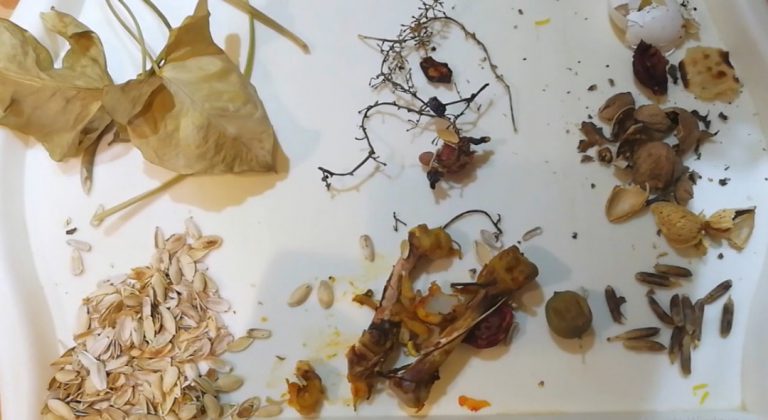Our goal is to sort out waste and utilize the type which is called wet and is thrown away. This waste can be used as a fertilizer for apartment plants and garden trees. Wet waste can include: The daily meal left over, parts of fruit which are not edible, vegetables, beans and etc.You can keep this kind of waste in a closed container so that the stench doesn’t bother you at home or your living space. You can collect this waste on a daily basis and take it to a location for fertilizer production on weekends and bury it. Or if you have a garden at home, you can pour the material in a proper pit on the same day and cover it with a layer of dust.
targrt: The segregation of wet waste and producing a fertilizer out of it / Organic fertilizers
The production method of compost fertilizers at home
If you don’t have access to an environment with a garden, you’re going to have to use a big bucket at home. First, you make a layer of dust, pour the wet waste on it, add another layer of dust and finally pour a little bit of water for better decay. Then you close the bucket lid shut. After this period of time, you will have reached a very perfect and useful source of fertilzer for your domestic plants.

The production method of compost fertilizers in gardens
Initially you dig a hole or a pit in your garden/house yard and pour in the wet waste including food and vegetal left over, then spray a bit of water on and add a layer of dust. After approximately 6 months, take out and use the fertilizer if needed. Another option is to dig the hole next to a tree and leave the fertilizer there to have the tree roots exploit it.
Municipal solid waste compost
Another method of treating municipal solid waste is composting, a biological process in which the organic portion of refuse is allowed to decompose under carefully controlled conditions. Microbes metabolize the organic waste material and reduce its volume by as much as 50 percent. The stabilized product is called compost or humus. It resembles potting soil in texture and odour and may be used as a soil conditioner or mulch. linke

Producing Organic fertilizers and preserving the natural environment
By utilizing wet waste in producing fertilizers, the usage of chemical fertilizers will reduce; hence less harm to the environment. In fact, the process of producing chemical fertilizers is very polluting and requires a great amount of energy which leads to global warming.
The decrease in water consumption and plant reinforcement
Note that this type of fertilizer is one of the richest ones. In fact, chemical fertilizers not only harm the environment, but they also aren’t that wholesome. However, this fertilizer is extremely rich and full of vital materials for plants. We should also point out that if dug in 40 to 50 cm deep next to a tree, this fertilizer decreases the need for plant watering to a large extent due to the potential for water or waste water purifier , absorption.

As you can see further in the film, we dig a large pit in the garden ground. Then we gradually pour the weekly collected wet waste along with dried tree leaves and branches in the hole and finally add a layer of dust. As we mentioned earlier, it’s better to cast some water before the dust for better decay. After 6 to 12 months we will have reached one of the best fertilizers.

